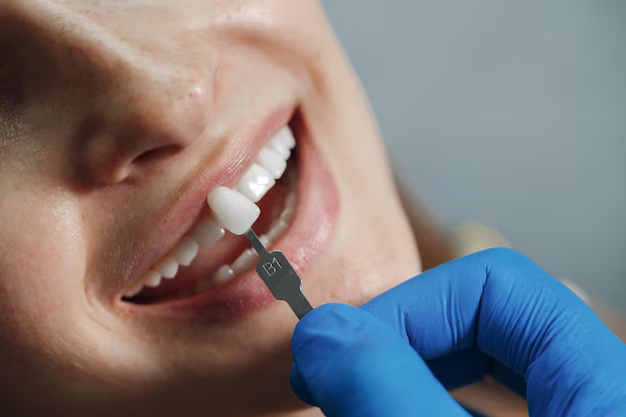An unexpected toothache can strike at any time, and it might be a sign that you need an immediate root canal treatment. This blog post is designed to provide an overview of emergency root canal procedures, giving you a comprehensive understanding of this common but often misunderstood dental procedure.
Root canal procedures, especially the emergency ones, are often associated with intense pain and anxiety. However, the reality is that an emergency root canal procedure, or ‘urgent endodontic procedure’ as dentists often refer to it, is designed to alleviate pain and save your tooth from further damage. It involves the removal of infected or inflamed pulp (the soft part inside the tooth), cleaning and shaping the inside of the canal (the area inside the root), and finally, filling and sealing the space to prevent further infection.
In this post, we’ll delve deeper into what an emergency tooth surgery involves, why it might be necessary, and how to prevent the need for one. So if you’re suffering from severe toothache, have been told you need an ’emergency pulp therapy’, or are just curious about urgent dental care, keep reading. The information in this blog could help you make informed decisions about your dental health in the future.

Understanding Root Canal: The Basics
A root canal is an urgent dental surgery that is often required when the pulp of the tooth, which contains nerves and blood vessels, becomes infected or damaged. This damage can be caused by deep decay, repeated dental procedures on the tooth, or a crack or chip in the tooth. If left untreated, the infection can cause severe toothache or lead to an abscess.
During an immediate root canal treatment, the dentist will remove the diseased pulp, clean and shape the inside of the root canal, then fill and seal the space. This procedure is performed under local anesthesia and is typically no more uncomfortable than a tooth filling. After the root canal, a crown or filling is placed on the tooth to protect it and restore it to its full function.
Although a root canal is often associated with pain, in reality, it is a pain-relieving treatment. The discomfort experienced in the period leading up to seeking dental care is truly painful. However, with today’s modern techniques and anesthetics, most patients report that they’re comfortable during the procedure.
Therefore, if you’re experiencing severe toothache, prolonged sensitivity to heat or cold, tenderness to touch and chewing, discoloration of the tooth, or swelling, drainage and tenderness in the lymph nodes, you may require an emergency root canal procedure. Don’t wait until the pain becomes unbearable, seek immediate dental care.
What is an Emergency Root Canal Procedure?
An emergency root canal procedure, often referred to as urgent endodontic surgery, is a dental treatment performed immediately to alleviate severe tooth pain and save a tooth that’s badly decayed or infected. This emergency dental care becomes crucial when the tooth’s pulp, which contains nerves and blood vessels, gets infected or damaged. The infection can lead to an abscess, an intense toothache, swelling, and even bone loss around the tip of the root if not treated promptly.
The procedure involves the removal of the infected or inflamed pulp from inside the tooth, followed by cleaning and shaping the inside of the root canal, then filling and sealing the space. This immediate dental procedure proves to be a life-saver for patients suffering from excruciating pain or discomfort, preventing tooth extraction, and preserving the patient’s natural smile.
It’s essential to note that an emergency root canal treatment isn’t performed arbitrarily. It is recommended when symptoms like severe toothache, prolonged sensitivity to heat or cold, discoloration of the tooth, swelling and tenderness in the nearby gums, or a persistent pimple on the gums are present. So, if you’re experiencing any of these symptoms, don’t delay seeking urgent dental surgery. Remember, the sooner you get treated, the better the chances are for saving your tooth and preventing the spread of infection.
Signs That You May Need an Emergency Root Canal
Recognizing the signs of a dental emergency can mean the difference between saving and losing a tooth. One such critical scenario is when an immediate root canal treatment becomes necessary. This typically happens when the dental pulp, the innermost part of the tooth, becomes infected or inflamed. Here are some signs that could indicate the need for an emergency endodontic procedure:
Severe Toothache: One of the most common signs of needing an urgent endodontic procedure is experiencing severe toothache, especially when chewing or applying pressure to the tooth. The intensity of the pain can vary, but it usually becomes more severe over time if left untreated.
Prolonged Sensitivity to Hot and Cold: While brief sensitivity to hot and cold temperatures can be normal, prolonged sensitivity may suggest a problem that needs emergency dental care. The discomfort might linger even after the temperature stimulus is removed.
Darkening or Discoloration of the Tooth: An infected tooth may become discolored or darker than the surrounding teeth due to the degradation of the pulp tissue inside the tooth. This can be a sign of needing an emergency tooth surgery.
Swelling and Tenderness in the Nearby Gums: Swelling or tenderness in the gums around a tooth can be an indicator of an infection that needs immediate dental procedure. The swelling can be quite noticeable and may be accompanied by pain.
A Pimple on the Gums: Often referred to as a dental abscess, a pimple or bump on the gums is a clear sign of infection. This can be quite painful and may even ooze pus. An abscess typically requires emergency pulp therapy or other urgent treatment.
It’s important to remember that while these signs can indicate a need for immediate tooth nerve treatment or other emergency dental procedures, only a dental professional can accurately diagnose the need for an emergency root canal. If you experience any of these symptoms, seek emergency dental care immediately.
The Procedure: From Start to Finish
An emergency root canal procedure, or urgent endodontic procedure, is a vital dental surgery that is performed when there is an immediate need to save a tooth that has a severe infection or damage. The procedure involves several steps and requires a high level of expertise.
The process begins with taking an X-ray to get a clear image of the root canal and the surrounding bone. This is crucial to determine the extent of the tooth’s damage and plan the procedure accordingly.
Preparation: Before the procedure, the dentist will administer a local anesthetic to numb the area around the tooth. This is to ensure that the patient does not feel any discomfort during the emergency dental care procedure.
Accessing the Tooth: The dentist will then place a small protective sheet called a dental dam around the tooth to keep it dry and clean during the procedure. Once this is in place, the dentist will drill an access hole into the tooth.
Cleaning the Root Canal: Using special tools, the dentist will remove the damaged or infected pulp from the root canal and the pulp chamber. This is known as emergency pulp therapy. The dentist will then scrub and flush the root canal with water or a sodium hypochlorite solution to clean it thoroughly.
Filling the Root Canal: After cleaning, the dentist will fill the root canal with a rubber-like material called gutta-percha. The access hole is then sealed with a temporary filling.
Restoration: After a few weeks, the dentist will remove the temporary filling and restore the tooth with a crown or a filling for protection. This is the final step of the immediate dental procedure.
Remember, an emergency root canal procedure is a complex process that should only be performed by a professional dentist or an endodontist. The procedure can relieve severe tooth pain and save your tooth from further damage. However, it is always best to maintain good oral hygiene to prevent the need for such immediate tooth nerve treatments in the first place.
Time and Pain: What to Expect
When it comes to urgent dental surgery, particularly an emergency root canal procedure, two of the most frequently asked questions revolve around the duration of the procedure and the associated pain. Here, we aim to address these concerns.
An immediate root canal treatment typically takes between 30 minutes to 60 minutes per tooth, depending on the complexity of the tooth structure and the severity of the infection. However, in some cases, especially where multiple appointments are necessary, the entire process can extend over a few weeks. The actual procedure, though, is usually completed in a single session.
As for the pain, it is a common misconception that root canals are excruciating. Contrary to this belief, emergency endodontic procedures are performed to relieve pain, not cause it. With modern anesthetics and techniques, the pain experienced during the procedure is often no more than that of a regular filling. After the procedure, over-the-counter pain relievers are usually sufficient to manage any discomfort.
Remember, the goal of an emergency pulp therapy is to alleviate intense toothache caused by an infected pulp and prevent further damage to surrounding teeth. Thus, if you’re experiencing severe dental pain, don’t let the fear of pain or time commitment deter you from seeking urgent dental care.
Recovery after an Emergency Root Canal
Recovering from an emergency root canal, be it an urgent dental surgery or an emergency endodontic procedure, typically follows a predictable course. This process can be broken down into several key stages, each with its own set of expectations and care instructions.
Immediate Post-Procedure:
Right after an emergency tooth surgery, numbness in your mouth may persist for a few hours due to the local anesthesia. During this period, avoid eating hard or hot foods to prevent accidental burns or bites. You may experience some discomfort or slight pain once the anesthesia wears off, but over-the-counter pain relievers can usually manage this.
First Few Days:
In the initial days following the immediate dental procedure, it’s normal to experience some sensitivity, especially to hot and cold foods. Your dentist may prescribe a special toothpaste to help with this. Remember to continue your regular oral hygiene habits, but be gentle around the treated area.
One Week Check-Up:
About a week after the emergency pulp therapy, your dentist will want to see you for a follow-up. This is to ensure that the urgent dental pulp treatment is healing properly and there are no signs of infection.
Long-Term Care:
Long-term care after an immediate tooth nerve treatment involves good oral hygiene habits. This includes regular brushing, flossing, and dental check-ups. With proper care, a tooth treated with root canal can last a lifetime.
Potential Complications:
Although rare, complications can occur after an emergency endodontic surgery. These might include persistent pain, swelling, or the occurrence of an abscess. If you experience any unusual symptoms, contact your dentist immediately.
Remember, every patient’s recovery process will differ slightly based on individual factors such as overall health, the seriousness of the infection, and the body’s response to treatment. Always follow your dentist’s specific post-care instructions for the best outcome.
It’s important to seek emergency dental care when needed, but remember that prevention is always better than cure. Regular dental check-ups can help detect problems early and avoid the need for urgent dental surgeries.
Risks and Costs Associated with Emergency Root Canal Procedures
When it comes to emergency root canal procedures, understanding the potential risks and costs is essential for making an informed decision.
Emergency root canal procedures, also known as urgent endodontic procedures, are generally safe. However, like any surgical procedure, they carry some risks. Complications, although rare, can arise due to the complexity of the procedure. These risks include infection, damage to surrounding teeth or tissue, allergic reactions to the anesthetic, and in some rare cases, failure of the procedure leading to the need for additional treatment or extraction of the tooth.
The cost of emergency root canal procedures can vary widely depending on several factors. These include the severity of the condition, the region you live in, the expertise of the dentist, and whether or not you have dental insurance. As a ballpark figure, you can expect to pay anywhere from $700 to $1,200 out-of-pocket for an immediate root canal treatment.
It’s important to remember, however, that foregoing an immediate dental procedure due to fear of cost or potential risks can lead to far more serious health issues down the line. Left untreated, an infected tooth can lead to severe pain, abscess, tooth loss, and even systemic infection. Urgent dental care, such as emergency pulp therapy, is often the best course of action to prevent these outcomes.
“Emergency root canal procedures serve as a critical intervention to alleviate severe pain and salvage a tooth that could otherwise be lost. The key lies in early detection and prompt, precise treatment. And remember, the health of your mouth is intrinsically linked to your overall well-being,”
– Dr. Guneet Alag, DDS, FAGD, Fab Dental, Hayward, CA.
Prevention and Alternatives
Preventing the need for an urgent dental surgery such as an emergency root canal largely hinges on regular dental care. Regular check-ups and cleanings can help detect problems early before they escalate into emergency situations requiring immediate intervention like an emergency pulp therapy. Good oral hygiene practices, including brushing twice a day, flossing daily, and using a mouthwash can help keep your teeth healthy and free from decay that could necessitate an immediate dental procedure.
While an emergency root canal is often required when the tooth’s pulp, which contains nerves and blood vessels, becomes infected or damaged, alternatives do exist. One such alternative is tooth extraction, followed by a dental implant or bridge. However, most dentists will recommend trying to save the natural tooth whenever possible, and root canals are a common way of doing this. Sometimes, a more conservative treatment called pulp capping can be tried if the pulp is not fully infected. This involves sealing the pulp with a cap, allowing it to heal itself.
Another alternative to an urgent endodontic procedure is a procedure known as pulpotomy. In this procedure, only the diseased part of the pulp is removed, leaving the rest intact. This can be an option if the infection has not spread to the root of the tooth. However, the effectiveness of these alternatives can vary and is often dependent on the extent of the tooth’s damage and the patient’s overall health. Therefore, it is crucial to discuss these alternatives and their potential risks and benefits with your dentist to make an informed decision.
Overall, the best way to avoid an emergency tooth surgery is through preventative care and promptly addressing any dental issues. However, if an emergency does arise, knowing the alternatives can help you make the best decision for your dental health.
Conclusion
When it comes to urgent dental surgery, and more specifically, an emergency root canal procedure, it’s important to recognize the signs early and seek emergency dental care as soon as possible. Waiting could lead to more severe dental issues, making immediate root canal treatment crucial.
The urgent endodontic procedure involves removing the infected pulp from the tooth, cleaning the area, and then sealing it. While it might be an emergency tooth surgery, advancements in dental technology have made the procedure more comfortable and effective than ever before. As part of the immediate dental procedure, dentists make every effort to minimize pain and recovery time.
Remember, emergency pulp therapy is not a routine dental procedure. It’s usually a result of neglecting dental health or failing to seek treatment for a dental problem in a timely manner. Therefore, regular dental check-ups can help prevent the need for an urgent dental pulp treatment and other emergency procedures.
Finally, while immediate tooth nerve treatment or an emergency endodontic surgery might sound intimidating, it’s a standard procedure that can alleviate severe tooth pain and save your natural tooth. It’s essential to consult with your dentist about the costs and risks associated with the procedure and the possible alternatives.
FAQs for Emergency Root Canal Procedures
What is an emergency root canal procedure?
An emergency root canal procedure is an urgent dental surgery performed to treat a severe infection in the tooth's pulp or nerve. This procedure is typically performed when the patient is in severe pain or discomfort.
What are the signs that I may need an emergency dental care?
Signs that you may need emergency dental care include severe toothache, swollen gums, prolonged sensitivity to hot or cold, darkening of the tooth, and pimple on the gums.
How is an immediate root canal treatment performed?
An immediate root canal treatment is performed by removing the infected or inflamed pulp from inside the tooth, cleaning and disinfecting the inside of the tooth, then filling and sealing the space. This process can often be completed in one visit.
What can I expect during an urgent endodontic procedure?
During an urgent endodontic procedure, your dentist will first numb the area to minimize discomfort. They will then drill a small hole into your tooth to access and remove the infected pulp. Once the space is cleaned and disinfected, it will be filled and sealed.
How painful is an emergency tooth surgery?
While the term "emergency tooth surgery" might sound intimidating, most patients report feeling no more discomfort than they would during a filling. The procedure is performed under local anesthesia, so the area being treated is numbed.
What is the recovery like after an immediate dental procedure?
After an immediate dental procedure like an emergency root canal, you might experience some sensitivity and swelling. However, these symptoms usually subside within a few days and can be managed with over-the-counter pain medication.
Is there any way to avoid an emergency pulp therapy?
Yes, maintaining good oral hygiene can significantly reduce the risk of needing an emergency pulp therapy. Regular checkups with your dentist can catch problems early before they become emergencies.







